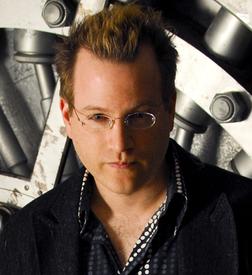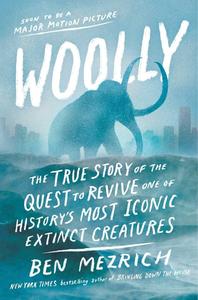
|
|
| photo: Eric Levin | |
Who doesn't love the idea that past mistakes of the human race could possibly be undone by scientific ingenuity? The very thought that one could, with dedicated work, bring an alternate view of the future from improbable to reality is what drives many people toward the sciences. Ben Mezrich's Woolly: The True Story of the Quest to Revive One of History's Most Iconic Extinct Creatures (out now from Atria; reviewed below) is, in part, an account of the scientific community's quest to return the Woolly Mammoth to Northern climates; it's also about the impulses driving those who are trying to achieve what was once considered impossible.
Tell us about the process of putting together this book. What kinds of research were involved?
I've been fascinated by Woolly Mammoths ever since I was a kid; at the same time, my entire goal in life as a writer was to be Michael Crichton. When I first heard about George Church and his Woolly Mammoth Revival project, I became obsessed with the idea of writing it. I reached out to him and he invited me into his lab. I embedded myself there, and got to know his post-docs as well as I could. I was like a fly on the wall, watching this crazy science. As with all of my books, my goal is to tell a true story in a thrilleresque fashion. I want to write it as if it already was a movie, which is how I see it in my head. So I spent months researching, talking to everyone I could, trying to understand the science--and then I tried to make it feel, through the writing, as exciting as it does inside my head.
Aside from Michael Crichton's, what books really stuck with you, both in terms of shaping your writing and fueling your love of reading?
As a kid my dad had a rule: my brothers and I had to read two books a week before we were allowed to watch television. So every week we would pick books--anything counted--and he would test us on them. I usually went for science fiction--I fell in love with Asimov, Heinlein, Bradbury. Then as I got older, I moved into Crichton, and then Hemingway. As an adult I read and read The Sun Also Rises the first week of every month. Pretty crazy, but I think it taught me a lot about how to paint a picture with a small amount of words. Then I discovered Hunter S. Thompson and he blew my mind. I really wanted to be a blend of Crichton and Thompson. Telling true stories in a thriller fashion, using real facts to construct something compelling.  The stories of the people involved in this project--their similarities and differences--are explored in Woolly, and you bring it all together in a way that gives the project a sort of epic scale. Did you get a sense that they feel part of an epic story?
The stories of the people involved in this project--their similarities and differences--are explored in Woolly, and you bring it all together in a way that gives the project a sort of epic scale. Did you get a sense that they feel part of an epic story?
Absolutely, epic is the right word. These young scientists who work in Church's lab are truly creating our future. They are bringing back an extinct species using cutting-edge genetic engineering. Because of them, Woolly Mammoths are actually going to walk the earth after being extinct for 3,000 years. That's insane, and huge. And these kids, essentially, aren't doing it for money or fame--they are just doing it because it's a scientific problem they are solving. And then there's George Church himself. I idolize him. He's this incredible, brilliant person--the Einstein of our times--who is pushing us toward a future that he, internally, has already envisioned. I do think everyone who has really thought about the Woolly Mammoth revival feels it's something epic, immense. My favorite quote from the book is what one of the scientists told me: "It's only science fiction until we remove the fiction, then it becomes real...."
How does their work fit into the larger quilt of scientific research? Do you see implications of their work for other fields of study?
That's really the core of the story. The Woolly Mammoth project is a moon shot. It's going to lead us in so many incredible directions. These same tools are employed in reverse aging. The next generation is going to live 150 years because of CRISPR and the mechanisms involved in building a Mammoth. The cure for cancer is going to come from the fact that elephants don't get cancer, because of something written in their genes. Mosquitos that can't carry malaria, the elimination of Lyme disease, biofuels from bacteria, all of this comes out of these advances in synthetic biology. I don't think I can overstate it--the same tech involved in bringing back the mammoth is going to change all of our lives. --Matthew Tiffany, LCPC, writer for Condalmo and psychotherapist

